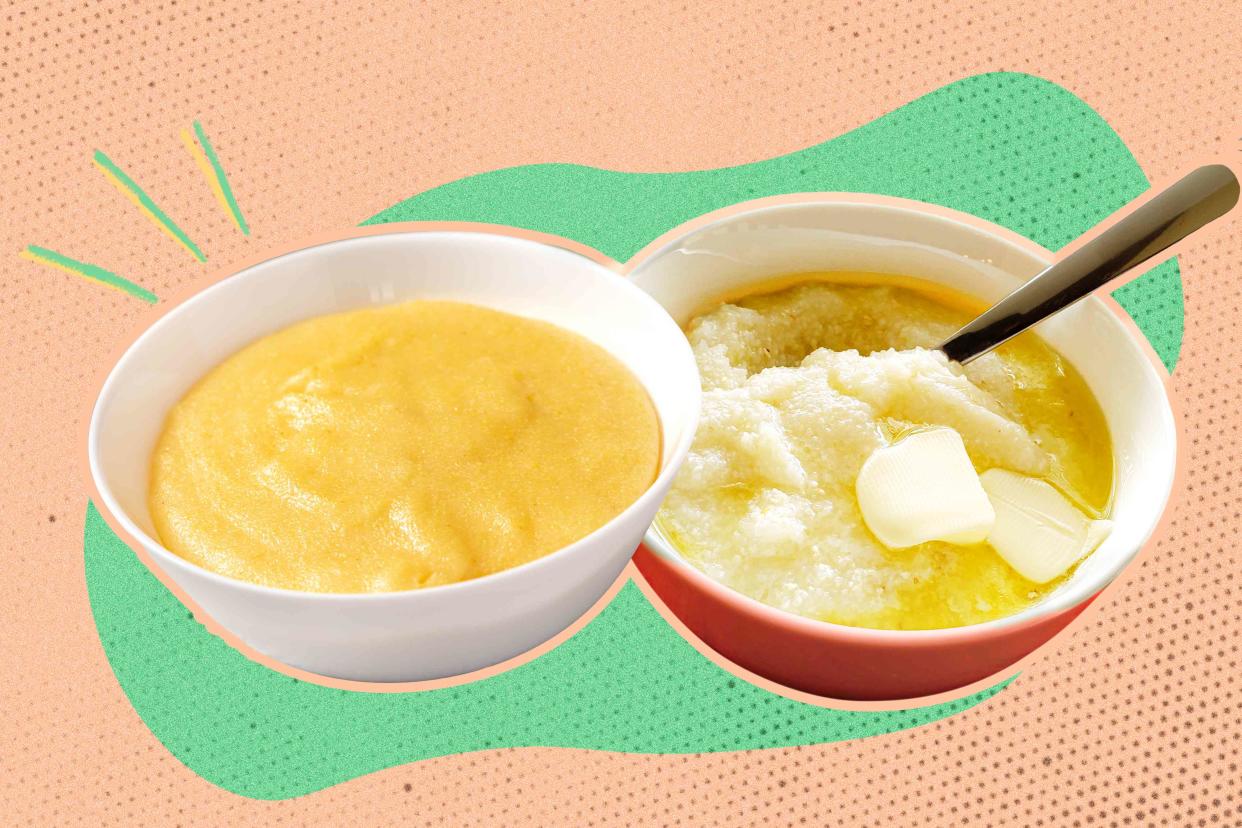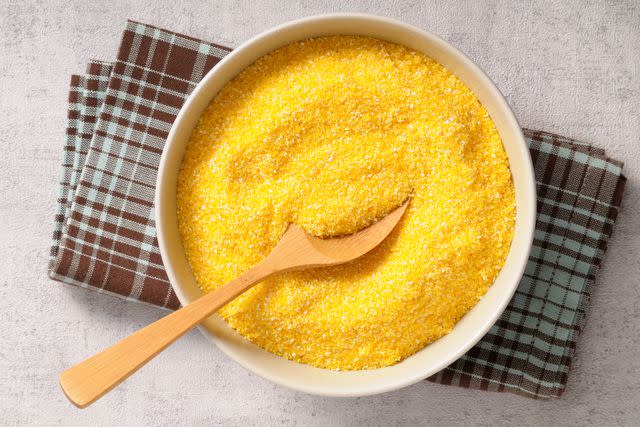Polenta vs. Grits: Experts Explain the Difference
Can you swap one type of ground corn for the other?

Simply Recipes / Photo Illustration by Wanda Abraham / Getty Images
When it comes to products made from globally used, versatile staple foods, you can always count on one thing: strong and often contradictory opinions!
Ground, dried corn—a staple product that spans continents—is no exception. Every culture has its own way of using corn products, and it can even differ from kitchen to kitchen. So I went to the experts, from millers to Italian and Southern chefs, to provide some grains of truth: What’s the difference between grits and polenta?
The Difference Between Grits and Polenta
Polenta originated in Italy. The owner of famed heirloom grains brand Anson Mills, Glenn Roberts, shares “[Polenta] is highly diverse in Italy; there’s a big list of plants in the maize canon that identify as polenta,” but what they have in common is that they are mainly types of flint corn, a variety that is, like its name suggests, very hard and less starchy than other varieties.
Polenta in the United States is not made with flint corn since this variety isn't readily available stateside. Instead, dent corn, a slightly softer and starchier variety, is most commonly used in the American South to make both polenta and grits. For instance, Brad Kelly, VP of Operations at Madison, Georgia's Farmview Market exclusively uses Hickory King dent corn for his grits.
The size of the ground corn is another differentiator. Drew Belline, VP of Culinary for legendary chef Ford Fry’s Rocket Farm Restaurants, explains, “Polenta is typically milled multiple times, which produces a finer product.”
Piero Premoli, executive chef and partner of Pricci in Atlanta echoes this. “True polenta is double-milled and more refined,” while true grits are passed through the mill only once for a coarser product."
You might wonder whether the color of the corn makes a difference, but it’s not a hard and fast indicator. Polenta is usually yellow, but grits can be white, yellow, or both. Miller Joann Fain Tarpley of Nora Mill Granary in Helen, Georgia uses a blend of white and yellow corn for the mill’s grits.

Simply Recipes / Getty Images
How Do These Differences Affect Cooking?
According to Roberts, both polenta and grits should be cooked low and slow, never brought to a boil, for the best flavor and aroma. Soaking can cut down on cooking time, but in his experience, medium-round grits like those from Quaker Oats take about 45 minutes; par-cooked quick grits take 10 to 15 minutes. Premoli says the cooking time is the same for polenta.
The most critical thing to keep in mind, says Belline, is the coarseness of the grind. “That’s what’s really going to affect the amount of liquid, temperature for cooking, and most importantly, the amount of time you are going to cook them.” A coarser product will require a longer cooking time to become tender.
When To Use Grits vs. Polenta
“I love to use polenta in winter for heartier dishes, like meat ragus and braises,” Belline shares. Overall, polenta is most commonly served as a dinner accompaniment.
Grits are more popular with Southern-style breakfasts. Greg Johnsman, owner of Marsh Hen Mill, says, “[Grits] can stand alone with butter or salt, [or] fried into grit cakes… But shrimp and grits is the go-to in [the South Carolina] Lowcountry.”
While polenta and grits have similar preparations, “some people consider it heresy to use them interchangeably!” says Roberts. Premoli’s one of them, “due to variances in texture.” Belline says they can be swapped, but Johnsman cautions it’s not an even exchange. “It can be hard to pass polenta as grits and grits as polenta…But they can be substituted if you have to.”
The Best Way To Store Grits and Polenta
Artisan grits and polenta are more perishable than commercial brands, but Fain Tarpley’s advice applies to all: “If not using them in the near future, they should be stored in airtight containers, preferably in the refrigerator or freezer. This helps maintain nutrients and keeps them super fresh.”
If you love either of these grains passionately, the chefs say it’s well worth it to seek out heirloom grains from small mills. Belline advises, “All grits and polenta from the store are not the same. When you source ‘the good stuff,’ it’s about tasting the essence of the corn,” whether you’re having grits with a Southern breakfast or polenta with an Italian dinner.
Read the original article on Simply Recipes.






